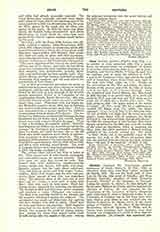

Siloe (SILOAH, SILOAM; Hebrew: MYHSLCH from SLCH, i.e. to conduct or send, connected with SLH a canal; hence the interpretation, Greek: ten kolumbethran tou Siloan [o ermeneuetai `Apestalmenos], John, ix, 7; also in September, Josephus, and Tacitus Siloam, H being changed to p for euphony sake or under the influence of 11Ma), a pool in the Tyropcean Valley, just outside the south wall of Jerusalem, where Jesus Christ gave sight to the man born blind (John, ix, 1-7). Thanks to the excavations of Mr. Bliss and others, the identification of the present pool with the Siloe of Isaias (viii, 6) and John (ix, 7) is beyond all doubt. Near the traditional pool (birket Silwan), Mr. Bliss found in 1896 the ruins of an ancient basin, 75 ft. north and south by 78 ft. east and west and 18 ft. deep, on the north side of which was a church with a nave. The pool connects with “the upper source of the waters of Gihon” (II Par., xxxii, 30) by a subterranean conduit (IV Kings, xviii, 17), called “the king’s aqueduct” (Hebrew: BRKT HMLN, II Esd., ii, 14), 600 yards long, the fall of which is so slight that the water runs very gently; hence Isaias (viii, 6) compares the House of David to “the waters of Siloe, that go with silence”. In 1880 the excavations of the German Palestinian Society uncovered in the Siloe pool near the outflow of the canal an inscription, which is, excepting the Mesa stone the oldest specimen of Hebrew writing, probably of the seventh century B.C. The tower “in Siloe” (Luke, xiii, 4) was probably a part of the nearby city wall, as Mr. Bliss’s excavations show that the pool had given its name to the whole vicinity; hence “the gate of the fountain” (II Esd., ii, 14).
NICHOLAS REAGAN

